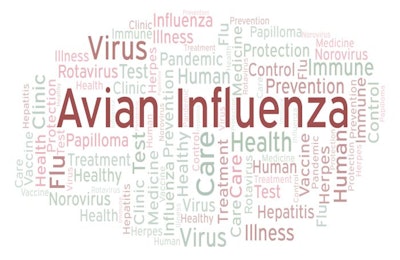
The United States Department of Agriculture (USDA) Animal and Plant Health Inspection Service (APHIS) stepped up its wild bird surveillance program and poultry biosecurity audits in the wake of ongoing outbreaks of highly pathogenic avian influenza (HPAI) in both Europe and Asia.
APHIS poultry experts shared updates on both programs during a recent webinar on avian influenza and biosecurity.
“I'm sure you remember all too well the 2014/2015 HPAI AI outbreak. It was the largest animal disease emergency our country has ever faced,” Jack Shere, Assistant Deputy Administrator, APHIS, said.
Wild bird surveillance
APHIS enhanced flyway wild bird surveillance for avian influenza beginning in the summer of 2020 through the winter of 2020, with prioritized sampling occurring in the Atlantic and Pacific flyways due to the Europe and Asian outbreaks.
This program has collected 1,000s of surveillance samples from wild bird throughout the U.S. since 2006. Samples are tested for avian influenza and, in some cases, other avian diseases.
“This year, for all of our tests for influenza A virus, we tested with a base specific PCR targeting matrix gene. If influenza A virus is detected, these samples are further tested by PCR to determine if they are H5 or H7,” said Tom Gidlewski, Program Manager, National Wildlife Research Center’s National Wildlife Disease Program.
In positive samples, virus isolation is attempted and researchers characterize the virus using a next generation sequencing technique known as whole genome sequencing.
More than 6,500 samples have been analyzed since the summer of 2020.
Poultry biosecurity audits
Following the 2014/2015 HPAI outbreak in the U.S., the National Poultry Improvement Plan established poultry biosecurity audits, a set of consistent standards that the agency hopes will prevent future widespread outbreaks.
“Companies must pass this audit in order to be eligible for indemnity and compensation. Indemnity compensation in the event of a HPAI outbreak is guaranteed. With a LPAI outbreak, those are situational depending on resources that are available, depending on the genetic sequencing of the isolate, for example, if it has a higher propensity of going to HPAI,” explained Dr. Michael Martin, Director of Poultry Programs for the North Carolina Department of Agriculture and Consumer Services.
“But a big element at the farm level is if your company has a biosecurity plan. You really must be following that company's plan that really is the whole goal and intent; trying to prevent the disease from being spread from waterfowl into certain farms or from farms to farms in case of a larger outbreak.”
The paper audit – which doesn’t include a farm visit – clearly defines what biosecurity procedures should be in place at a poultry facility. Guidelines include PPE, equipment and vehicle flow, disinfection processes, reporting procedures and more.
In Japan, biosecurity breaches – which included holes in the roof or walls and inadequate disinfection practices – were to blame for outbreaks linked to the H5N8 HPAI virus.
The audit program launched in August 2018, with an initial deadline of two years later in August 2020. In North Carolina, 30 audits have been completed so far, composed of 22 standard commercial integrators and eight game bird producers.


















